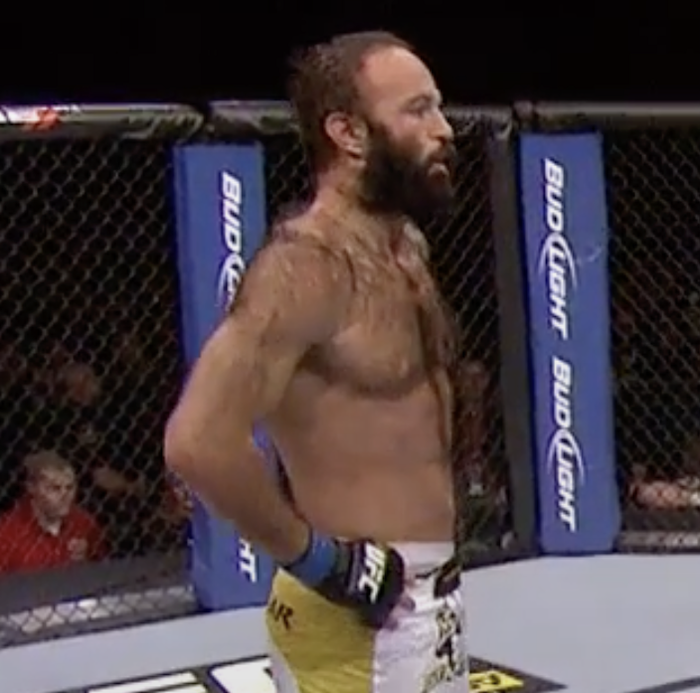
In the fiercely competitive arena of UFC and MMA, every detail counts, including personal grooming.
While there’s no rule mandating fighters to shave their bodies, many choose to do so for various reasons.
This article delves into the intriguing world of UFC/MMA fighters and their shaving habits.
Do UFC Fighters Have To Shave Their Bodies?
No, UFC fighters don’t have to shave their body. There isn’t any rule against having body hair in the Official Unified Rules of MMA.
The only rule regarding hair comes under 10. Cage/Ring Attire, point i, which says, “When deemed necessary by the referee all mixed martial artists shall have their hair secured in a manner that does not interfere with the vision and safety of either contestant.
No object can be worn to secure the contestant’s hair which may cause injury to either contestant.”
Therefore, UFC and MMA fighters can grow their body hair as long as they want it to be.
A famous and hilarious example of a UFC fighter growing their body hair was Dave Herman.
Before his second UFC fight on February 15, 2012, against Stefan Struve, Dave Herman grew a scraggly beard and didn’t shave his body hair for many months. This led to him having hair all over his back, chest, and shoulders.
He died his body hair and beard black and proclaimed to the media he was Sasquatch (Bigfoot).

Why Do UFC/MMA Fighters Shave Their Bodies?
UFC and MMA fighters shave their bodies for 7 key reasons:
- Reduced Friction: Smooth skin creates less friction, allowing fighters to slip out of holds and grapples more easily.
- Increased Slipperiness: A smooth, hairless body allows sweat to spread more evenly across the skin’s surface, rather than being held by hair, creating a slicker and more slippery body. This can be a tactical advantage in grappling situations, as it makes it more difficult for an opponent to maintain a strong grip.
- Reduced Infection Risk: Shaving body hair lowers the chance of infections. Hairless skin is easier to clean, especially when dealing with cuts and scrapes, thereby reducing the risk of transmitting skin conditions like ringworm or staph.
- Easier Injury Management: Hairless skin simplifies the treatment of injuries. Without hair, applying and removing bandages, plasters, or adhesives becomes less painful and more efficient, as there’s no hair to pull or get in the way.
- Hygiene and Odor Control: Hair traps sweat and fosters bacterial growth, leading to unpleasant odors. Shaving can mitigate this, contributing to better hygiene, particularly important in training and close-contact situations.
- Aesthetic and Psychological Reasons: A hairless body can accentuate muscle definition, potentially intimidating opponents. Most fighters also believe it makes them look better, potentially increasing their popularity and social media following.
- Pain Reduction During Grappling: Body hair can be pulled during close combat and grappling, causing significant pain and distraction. Shaving body hair helps avoid this discomfort.
Overall, in the hypercompetitive world of MMA and UFC fighting, where the smallest margins can be the difference between winning and losing, shaving represents a strategic advantage for many athletes.
While the overwhelming majority of UFC and MMA fighters choose to shave their body hair, including their chest, back, arms, and even legs, to gain an edge or level the playing field, shaving remains a personal choice.
Each fighter weighs the benefits against their own preferences and strategies, making the decision to shave a considered and individual one in the pursuit of competitive excellence.
Georges St-Pierre once shared that he preferred to shave his body for tactical advantages and aesthetic reasons.
He believed that a hairless body showcased his muscular definition better, contributing to a psychological edge over his opponents.




